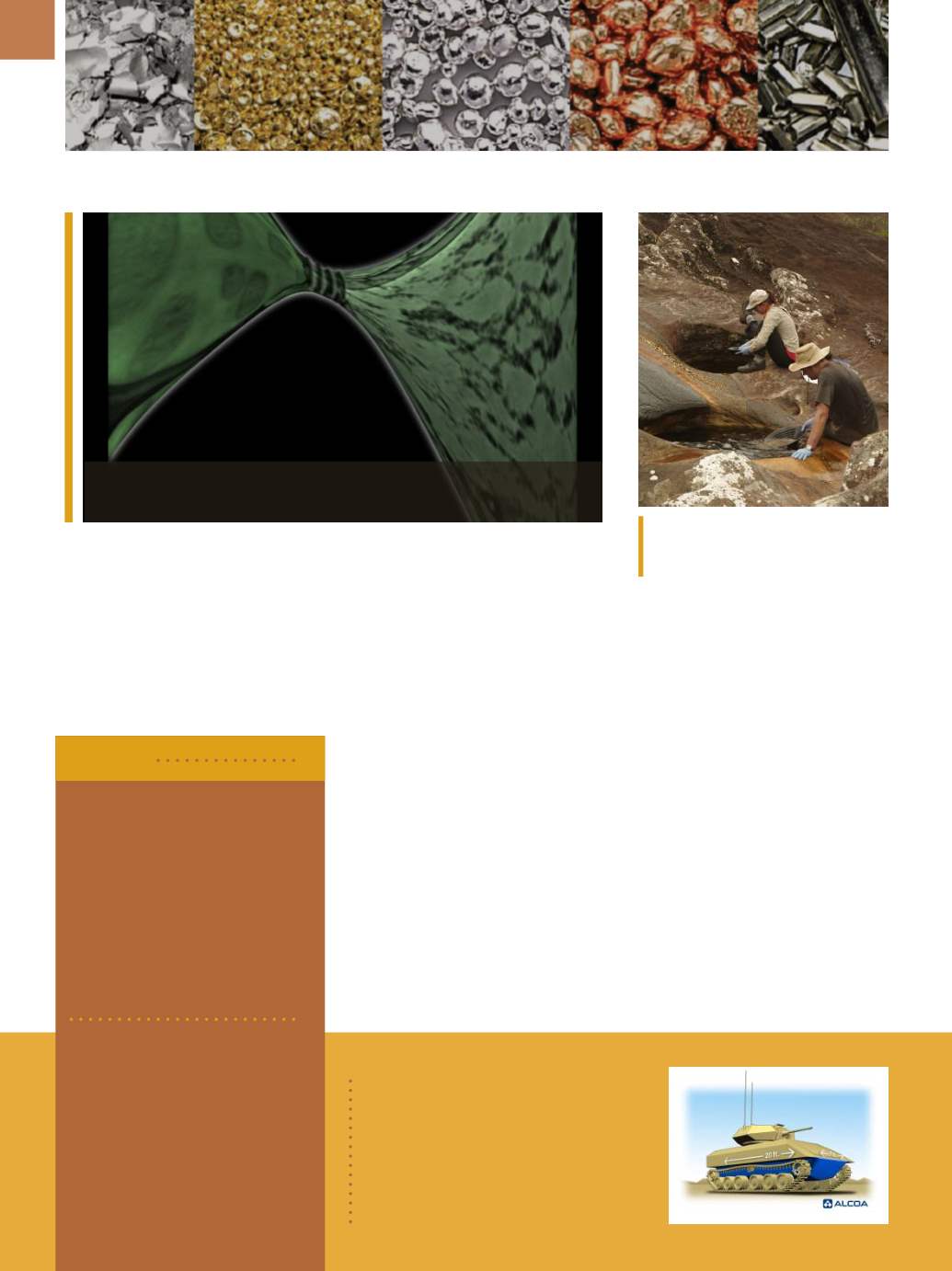

A D V A N C E D M A T E R I A L S & P R O C E S S E S | M A Y 2 0 1 6
1 0
METALS | POLYMERS | CERAMICS
through surface environments,” says
Frank Reith, at the University of Ade-
laide’s School of Biological Sciences
and visiting researcher at CSIRO Land
and Water, both in Australia. “This re-
search reveals the key role of bacteria
in these processes. This improved bio-
geochemical understanding is not only
important from a scientific perspective,
but we hope will also lead to new and
better ways of exploring these metals.”
“Traditionally it was thought that
these platinum group metals only
formed under high pressure and tem-
perature systems deep underground,
and that when they were brought to
the surface through weathering and
uplift, they just sat there and noth-
ing further happened to them,” says
Reith. “We’ve shown that is far from the
case. We’ve linked specialized bacterial
ORNL’s tough new plastic is made with 50% renewable content frombiomass.
Courtesy of ORNL. Conceptual art by Mark Robbins.
ConstelliumN.V.,
Amsterdam,
signed a contract with
Airbus,
France. Under the new agreement,
Constelliumwill supply Airbus with a
broad range of advanced aluminum
rolled products for airframes includ-
ing wing skin panels, aero-sheets for
fuselage panels, as well as rectan-
gular and pre-machined plates for
structural components
. constellium. com, airbus.com.
Dutch startup
Eurekite
developed
a new kind of ceramic, one that
is both flexible and easily made
at varying degrees of thickness.
The company, affiliated with the
University of Twente in the Neth-
erlands, is initially marketing the
new product as a replacement for
traditional printed circuit board
materials.
eurekite.com.
BRIEFS
Alcoa Inc.,
Pittsburgh, received a
five-year contract from the
U.S. Army
worth up to $50 million for R&D projects
focused on developing lightweighting
solutions for ground combat vehicles,
such as the monolithic hull for combat
vehicles shown here.
alcoa.com,
tardec. army.mil.
RENEWABLE MATERIALS MAKE
STRONGER PLASTIC
Researchers at the Department of
Energy’s Oak Ridge National Laboratory,
Tenn., made a better thermoplastic by
replacing styrene with lignin, a brittle,
rigid polymer that, with cellulose, forms
the woody cell walls of plants. In doing
so, they invented a solvent-free produc-
tion process that interconnects equal
parts of nanoscale lignin dispersed in
a synthetic rubber matrix to produce a
meltable, moldable, ductile material at
least 10 times tougher than acryloni-
trile, butadiene, and styrene (ABS). The
resulting thermoplastic—called ABL for
acrylonitrile, butadiene, lignin—is recy-
clable, as it can be melted three times
and still performwell.
ornl.gov.BACTERIA HELPS
PLATINUM FORM
Scientists uncovered the import-
ant role of specialist bacteria in the
formation and movement of plati-
num and related metals in surface en-
vironments. “These platinum group
elements are strategically important
metals, but finding new deposits is be-
coming increasingly difficult due to our
limited understanding of the process-
es that affect the way they are cycled
Panning for platinum grains in Brazil:
Frank Reith and Barbara Etschmann.
Courtesy of University of Adelaide.


















